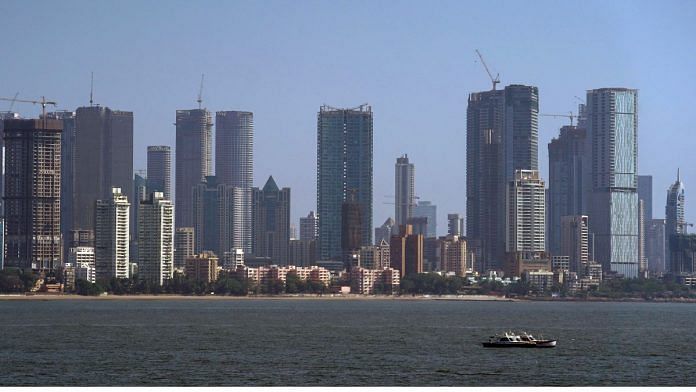New Delhi: As sea levels rise across the globe, Mumbai is among the cities that would be most affected, according to a report by the World Meteorological Organization (WMO).
In its report published Tuesday, the WMO, a specialised agency of the United Nations with a mandate that covers weather, climate, and water resources, said sea levels rose by 4.5 millimeters a year on average between 2013 and 2022 — over three times higher than the rate at which they rose between 1901 and 1971 — potentially endangering coastal populations and ecosystems.
The threat of sea level rise has been mounting since the start of the 20th century, the WMO report says. The average yearly rise in sea levels was 1.3 mm a year between 1901 and 1971, which increased to 1.9 mm a year between 1971 and 2006, and 3.7 mm a year between 2006 and 2018.
Rising sea levels cause the erosion of coastal ecosystems, worsening the intensity of storm surges and flooding. It can also lead to the contamination of soil and groundwater with salt, further impacting food security.
A reading of the report shows that the rise of 4.5 mm is the highest so far.
According to the WMO, “human influence was very likely the main driver of these increases since at least 1971”.
The effects of sea level rise are not uniform, and India, along with the Netherlands, Bangladesh, and China, is among the worst impacted because of its large coastal population.
Anjal Prakash, research director and adjunct associate professor, Bharti Institute of Public Policy, Indian School of Business, and a lead author of the Intergovernmental Panel on Climate Change (IPCC), said in a statement Tuesday: “India is a major hotspot when it comes to coastal impacts because of climate change. Sea level rise exposes the country to water insecurity because of salinity. Secondly, SLR has also resulted in decline in fish production. This is not a healthy sign for India.”
He stressed on the need for “adaptation measures to secure the livelihood of fishermen and water security in terms of providing safe and clean water to inhabitants of coastal areas”.
“The problem of climate change-led sea level rise needs more discussion at the policy level, explaining the bottom-up plan at the sub-district level and how we can map climate impacts at the local level,” he added.
Besides Mumbai, Shanghai, Dhaka, Bangkok, Jakarta, Maputo, Lagos, Cairo, London, Copenhagen, New York, Los Angeles, Buenos Aires, and Santiago are among the cities most threatened by the sea level rise, the WMO report says.
Even if global warming is limited to 1.5 degrees above pre-industrial levels, “sea-level is committed to rise for centuries to millennia due to continuing deep-ocean warming and ice-sheet melt and will remain elevated for thousands of years,” says the WMO. According to the Intergovernmental Panel on Climate Change, the Earth is currently 1.1°C warmer than it was in the late 1800s.
Also Read: Climate change deadlier than cancer, widening gap between haves, have-nots, says new UN study
What’s causing the rise
The WMO’s analysis suggests the rise in global mean sea levels is explained by a loss of ice on land, the melting of glaciers and ice sheets, and thermal expansion from ocean warming.
“Thermal expansion explained 50 per cent of sea level rise during 1971–2018, while ice loss from glaciers contributed 22 per cent, ice sheets 20 per cent and changes in land-water storage 8 per cent,” says the WMO, adding that the rate of ice sheet loss increased by four times between 1992 to 1999 and 2010 to 2019.
According to the report, sea levels will rise by 2-3 metres over the next 2,000 years if the rise in global temperatures is limited to 1.5°C (above pre-industrial levels) till the end of the century. However, higher temperatures would mean more rise in sea levels — the report predicts a 2°C warming would mean a rise of 2-6 m, while 5°C would mean a 19-22 m rise in sea levels.
According to UN estimates, the world could see a 2.4-2.6°C rise in temperatures by the end of this century.
“Responses to ongoing sea-level rise and land subsidence in low-lying coastal cities and settlements and small islands include protection, accommodation, advance and planned relocation and ecosystem-based approaches,” the WMO says. “These responses are more effective if combined and/or sequenced, planned well ahead, aligned with sociocultural values and development priorities, and underpinned by inclusive community engagement processes.”
(Edited by Uttara Ramaswamy)
Also Read: Why Indian scientists are critiquing IPCC report — unfair burden on developing countries




